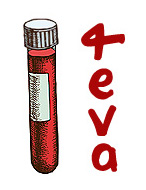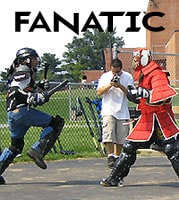Wing Chun Dummy
Sat, Feb 8, 12:17 AM
James,
What is your opinion on Wing Chun training dummies? Could they be used by self-taught individuals to add to their stick, blade and boxing solo training, or should they be left to Wing Chun people?
Best regards,
- The Exile
First, sorry for taking so long, Sir.
I have trained on 3 different Mooks or Wooden Dummies' in 7 schools or homes, four of those being the temporary home of Arturo Gabriel's teakwood dummy, his most treasured possession.
Perhaps I have put in a total of 20 hours on these devices. I actually used one at Practical MMA in Edgemere Baltimore County back in December after I was done coaching boxing. I do not know how it is supposed to be used and know very little about Wing Chun internally, but rather from cross-training with practitioners.
You know who would be good on one of these things, Tyson Fury. He uses wing blocks a lot and that block is intrinsic to the usefulness of Wing Chun in mixed use. And, in true gypsy fashion, I'd say that no, we should not just leave this useful device to Beautiful Springtime practitioners, but combatively appropriate it.
Place the mook in a corner of dead space away from the sparring area so that no one falls into the hard wood and hurt themselves.
I love the hard wood, but Paladin author Simonet actually did a book or video on how to make one from PVC.
The hard wood arms are an excellent tool for developing bone density and sensitivity in your hands and arms. For bare knuckle boxing practice use them for the parry, wing block, stop and shoulder role. Unlike the Wing Chun habit of rooting, you want to move off and past often.
Open hand and hammer strikes should be the norm against the hardwood post.
If you want to punch it then use the three-knuckle landing Dempsey suggested and for the face, tape a folded towel or foam matting to the post.
Make sure you use the resistance of the wooden arms, the end of which represent the thick portion of the forearm just below the elbow, to improve your position. These three arms and that one leg, stationary as they are, serve you well in practicing the clinch.
For stick work, use it to practice checking and passing and I suggest wrapping the trunk with tatami matting to safe your sticks from ruin.
Perhaps the best use of the Mook is blunt knife training with the hard structure rejecting chops and encouraging long slicing and giving four limb-striking targets at the same time as the post representing the vitals. For knife, this is the best apparatus out there.
For waster or boken training, I very much like the mook, though its owners will not want you marring it with your shitty wooden sword. Gabriel used to flip when knuckleheads at the school would use his mook to hang their wraps and gloves, though as a glove-drying rack it is second to none in my opinion.
Whatever you use the mook to train on:
boxing
kickboxing
wrestling
stick
knife
sword
do your isolation work in place for repetitions to start then, after you have a handle on not injuring yourself on it, use it to practice ranging in and ranging out and passing on both sides. A stationary target, in many ways, can force your movement more than a swinging bag or even sparring partner, by using your discipline to trigger you to move whenever the foe stands still, which means your mook work should be one of constant movement against the unmoving bone simulator.











